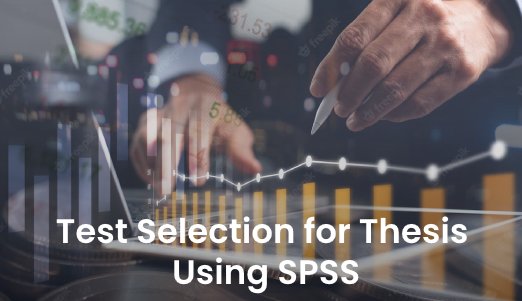Correlation Statistical Analysis Using SPSS
Introduction
A correlation is a statistical technique that determines if two variables are associated with each other or if they are significantly related to each other. By looking at the weight and height data of taller and shorter people, with their correlations, we can find out how these two variables are related. It is also possible to find a correlation between these two variables and state that their weights are positively related to their heights. The correlation coefficient is used to measure correlation. SPSS help to make it easy to calculate correlation coefficients. In order to calculate SPSS correlation, we should have some basic knowledge about correlation. In general, the correlation coefficient should be between -1 and 1.
These three types of correlations exist:
- Positive and negative correlation: A positive correlation occurs when two variables move in the same direction. It is said to be a negative correlation when one variable move in a positive direction and other variable moves in a negative direction.
- Linear and non-linear or curvilinear correlation: Linear correlation can be defined as the rate at which both variables change by the same amount. The curvilinear correlation occurs when both variables do not change at the same rate. When sales and expenditure move in the same ratio, they are said to be linearly correlated, and if they do not move in the same ratio, they are said to be curvilinearly correlated.
- Simple, partial and multiple correlations: The term simple correlation is used when two variables in correlation are included in the study. A partial correlation occurs when the correlation between one variable and a factor variable is taken into account. Correlations that consider multiple variables are called multiple correlations.
The correlation coefficient can be calculated in many ways, but in SPSS there are three ways to calculate it. SPSS Data analysis offers an option in the Analysis menu for bivariate analysis with Pearson correlation for continuous variables. The Spearman rank correlation can be used if data is ranked. As part of the analyses menu in SPSS, this option is also called Spearman correlation. Phi, contingency coefficients, and Cramer's V are suitable correlation tests when the data is nominal. SPSS can be used to calculate this value in cross-tabulation. It is best to use the Phi coefficient for a 2x2 table. The continuity coefficient C works for any table.
Conclusion
Correlation is measured using the correlation coefficient. Generally, the correlation coefficient should range from -1 to 1. Positive correlation occurs when two variables move in the same direction. There are three types of correlation: simple correlation, partial correlation and multiple correlations. There are a number of ways to calculate correlation coefficients but in SPSS, there are three ways which are mentioned in the above paragraph.
.jpg)
.jpg)



Comments
Post a Comment